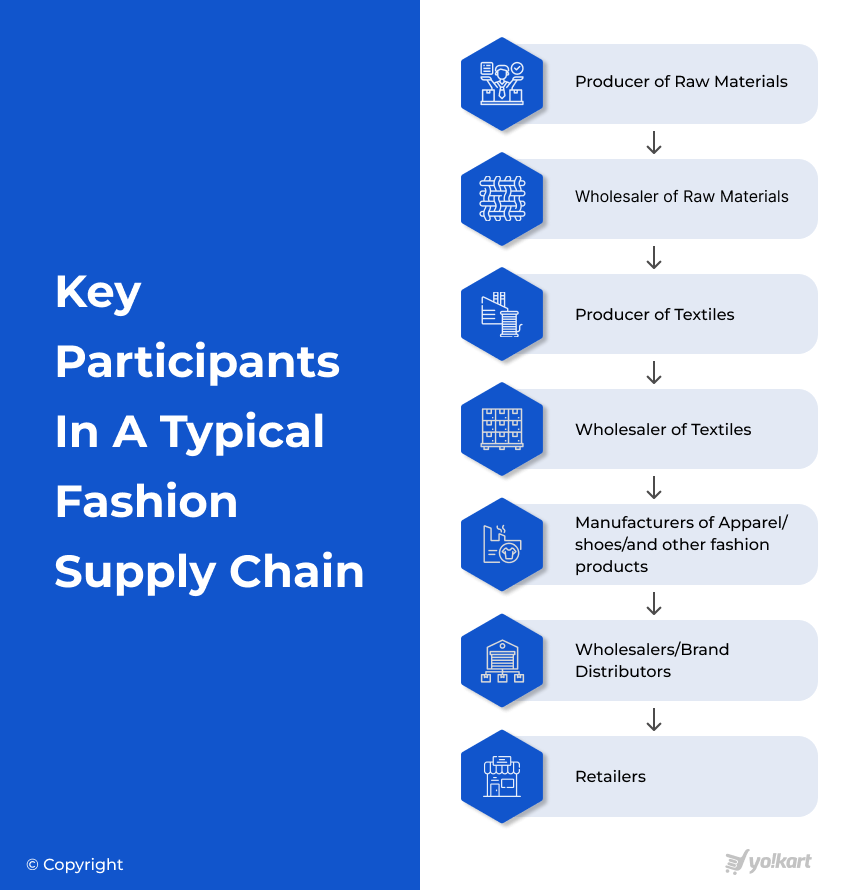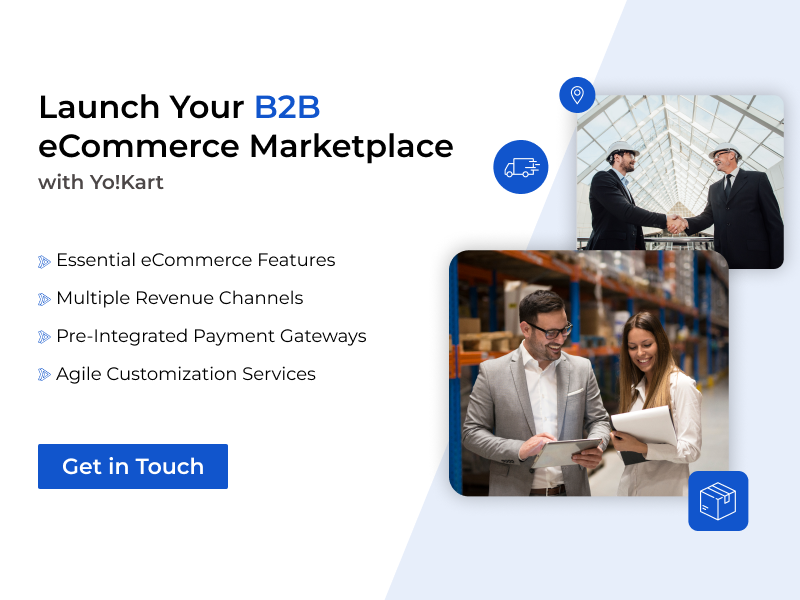Competition in eCommerce is intensifying. Given the incredible value, increasing consumer penetration, and continual development of supporting infrastructure in the online ecosystem – it is now more about finding opportunities before they are lost, for businesses.
And it is becoming increasingly evident that those opportunities lie in specialized roles, a razor-sharp focus on buyer needs, and creating a purpose-built platform. Because by giving tailor-made solutions and building a distinct brand identity, businesses stand a better chance to gain buyers’ attention.
In eCommerce, this distinct brand identity is best built by operating in a niche market.
According to Statista, fashion as an eCommerce niche outperformed every other in 2022, generating US $ 870 bn. This figure is projected to double itself to US $ 1.5 T by 2027.
Clearly, the online fashion industry is underpinned by sustained demand, which is expected to grow in the years to come. And these numbers suggest opportunities throughout the value chain. Fashion within eCommerce will grow for businesses catering to end-consumers and those operating within the supply chain liaising transactions between businesses – i.e. B2B fashion marketplaces.
In this blog, read about the industry, its opportunities, and how to build a B2B fashion marketplace.
Table Of Contents
- How does a B2B Fashion Marketplace Work
- Possible Revenue Channels in a B2B Fashion Marketplace
- Build a B2B Fashion eCommerce Platform
-
– Step:1 Initial Market Research
– Step:2 Identify a Fashion Sub-Niche
– Step:3 Find and define your Unique Selling Proposition
– Step:4 Identify the Essential Features of the Platform
– Step:5 Developing the Platform
B2B Fashion Industry – Factors Driving the Online Shift
The B2B fashion landscape is increasingly shifting towards digitization. According to Mordor Intelligence, the B2B eCommerce market in North America is projected to grow with a CAGR of 10.2% for the period of 2022-2027.
Buyers in the space have been increasingly shifting online – towards fashion eCommerce platforms to source their needs while suppliers continue to look for online channels to reach buyers. There are multiple reasons for this shift. Some primary ones are:
- If the pandemic-disrupted life was seemingly moving towards normalization, the current geopolitical tensions have been forcing buyers to refine their procurement – away from traditional channels.
- The trend of Fast Fashion in this industry means that product line-ups have to be constantly refreshed throughout the supply chain. This in turn implies product lifecycles are typically short in this space. This requires the buyers to be fleet-footed with their procurement.
- Inflation-driven rising raw material costs have put pressure on buyers to reevaluate their procurement strategy.
- Legacy global fashion supply chains are fragmented and spread across the globe.
- Online channels leverage the asset-light advantage to lower overheads – passing the value downstream to businesses pushing for a competitive advantage.
While these are key reasons, there are many more that are shaping the evolution of the B2B fashion industry.
Further, letÔÇÖs have a look at the leading Fashion eCommerce platforms that are operating in the B2B space.
Leading B2B Fashion eCommerce Platforms
Listed below are the key players in the B2B eCommerce space that are driving the change and reforming the industry toward exploring digital channels more extensively. These are the top-performing sites for B2B fashion eCommerce. (like Amazon, some of the businesses mentioned below are not necessarily niche marketplaces that are built exclusively for the B2B fashion space.)
Amazon Business
Amazon itself is arguably one of the biggest names in eCommerce, to a point that it can be credited with pioneering the revolution in the industry. To this date, it can be credited with introducing a number of firsts – defining the industry and shaping user expectations.
Similarly, Amazon Business, Its B2B operations arm, is a leading player in the online B2B space generally, inclusive of the fashion niche.
Amazon Business is a global brand with a very diversified portfolio and multiple business concerns. It is a free-to-use site, although the revenue generation channel is primarily in the form of commissions at multiple levels after a deal is closed.
eWorldTrade
Another horizontal marketplace, eWorldTrade also offers multiple product categories. It offers directory access to the buyers, along with the list of products offered on the platform. It is a leading B2B Marketplace that connects more than one million verified users with its platform.
The B2B marketplace is based in the US. It continually ups the ante with its progressive services. With a million users, it is an ideal platform for traders to transact for their B2B needs online.
Thomas Net
Thomas is a North America-based industry sourcing platform. It is the largest industrial online B2B marketplace in the world. The platform connects industrial buyers and manufacturers in America to buyers across the world. The B2B website has an extensive product catalog with over 650,000 registered American manufacturers, suppliers, and distributors in an equal number of categories.
ThomasNet is currently the only online platform that allows you to avail of maintenance, repair, and operations. Furthermore, the users can also connect with OEM suppliers across product categories. Also, if the buyer wishes to view the nearly 1 billion products, they have to use the “Product Sourcing” option.
FashionTIY
As the name suggests, Fashion TIY is a niche-focused online B2B marketplace. Naturally, the marketplace is tailor-made for fashion B2B buyers. It focuses on their key pain points and offers a cohesive platform to address them. FashionTIY is an online wholesale market for wholesalers, resellers, and retailers.
They screen sellers and ensure that the platform offers unique products to the buyers. It invests efforts in quality control measures on the platform. Additionally, there is good customer support and after-sales services on the platform.
The marketplace operates in apparel, jewelry, bags, shoes, wedding & party dresses, children, and other sub-niches.
How Does a B2B Fashion Marketplace Work?
In essence, a marketplace has three participant entities, each with their own roles within the ecosystem. They operate as follows.
- The Admin: Building infrastructure; providing support for backend operations such as shipping, payment processing, and more; brand building; adding a buyer base; inviting sellers.
- The Vendors (Third-Party): Listing and offering products and services on the platform. Shipping them to the warehouse/fulfillment center/or directly to the buyers.
- The Buyers: Searching for their requirements on the platform; interacting with support channels and seller communication channels; completing the purchase by transacting on the platform.
Although this is the most popularly adopted business model, specificities can change with each marketplace. For instance, some marketplaces can act as just as liaising agents and connect sellers with buyers. They may not offer payment processing. While some like Amazon business also participate in the selling process with their own range of products.
Moreover, in the B2B space, specificities are relatively more complex. For instance, consider the participants in a typical fashion supply chain:

While a supply chain may involve many more middlemen, agents, and other liaising parties. A B2B fashion marketplace can be a digital platform to connect any/all of these participants for a particular fashion niche.
Accordingly, the business model can be reshaped as per the platform participants’ needs.
Suggested Read: B2B eCommerce Marketplace Business Models With Examples.
Possible Revenue Channels in a B2B Fashion Marketplace
One of the most significant advantages of a multi-seller setup in a marketplace is the revenue generation possibilities. By bifurcating responsibilities between the Admin and third-party sellers, marketplace platforms can earn via multiple methods. Some popular channels are as follows:
- Commissions: One of the most popular ways to generate revenue is commissions. They can be charged for every closed deal on the platform.
- Subscription fees: Subscription packages can be introduced on the platform for the users. This can be in addition to or in lieu of commissions charged.
- Monetizing website assets: Running PPC campaigns or monetizing website assets such as banner images for sellers to post their advertisements.
- Offering services: Depending upon the infrastructure in place, the backend services offered by the business can be a source of revenue as well.
While these are the most common revenue channels, especially at the initial stage of the business, a multi-seller platform can earn via multiple other revenue channels. Furthermore, multi-seller businesses tend to scale up, allowing businesses to explore opportunities via partnerships, acquisitions, business diversification, and more. Amazon Business is a prime example of this.
Build a B2B fashion marketplace with the most Effective Revenue Streams
Build a B2B Fashion eCommerce Platform
In the previous section, we briefly analyzed how a B2B fashion marketplace can work and earn money. With that knowledge, we can proceed with some basic steps on how a B2B fashion platform can be created.
Step: 1 Initial Market Research
For a successful eCommerce business, market-survey data will be needed to identify the demand for fashion products. If there is a market gap, chances are that a new marketplace business has the opportunity to fit in with its products or services.
Moreover, insights into buyers’ needs will further provide information on how to approach building the eCommerce business. Ideally, you want to shape the business into providing a solution to the buyersÔÇÖ needs. With such a business setup, it is easier to gain buyer traction.
Step: 2 Identify a Fashion Sub-Niche
Fashion eCommerce is in itself a big industry that finding a sub-niche within it can lead to a marketplace with specialized roles. The sub-niche in itself can have the potential to rake in the targeted revenue from the business, as per the investment capital.
The following sub-niches within fashion eCommerce can be considered:
- Clothing and Apparel
- Shoes
- Accessories and Bags
- Jewellery and Luxury items
Step: 3 Find and Define your Unique Selling Proposition
Your B2B Fashion platform will stand out if it is built around offering key USPs. These USPs, if marketed well, will position your business distinctly in the market. These USPs will be the reason buyers will turn to the platform for their needs.
Some key drivers that reinforce buyer interests positively are as follows:
Easy Access: The platform is able to provide buyers with products or services, difficult to procure.
Price Advantage: Product prices on the platform are able to undercut standard market procurement prices.
Liaising Advantage: The platform is able to digitize middlemen or agents, adding more value to the buyers.
Larger Pool of Sellers: Not all sellers have the means to invest in finding the right buyers. A platform can introduce a large seller base to the buyers to choose from conveniently.
Convenience and Efficiency: The platform is able to shorten legacy B2B procurement procedures, adding convenience. This can be possible with the aid of purpose-driven platform features.
These are some drivers that can drive results for the platform.
Step: 4 Identify the Essential Features of the Platform
Based on the analysis of the steps preceding this, one can proceed with understanding the key underpinnings that can streamline operations of the eCommerce platform, providing value to all participants.
Discussed below are key features that allow smooth B2B interactions – online.
Request For Quote Functionality
In the B2B space, subject to varying pricing strategies, businesses tend to stay flexible with the prices of their products. The product prices can be dependent on a number of factors – competition strategy, demand-supply gap, order volume, buyer relations, inventory status, branding considerations, and a lot more.
An RFQ module will let buyers and sellers negotiate. Rather than quoting a fixed price, the sellers can stay open with a flexible pricing strategy.
Suggested Read: Know the true value of RFQ feature in B2B marketplaces by understanding how it works.
Bulk Orders Discounts and Minimum Order Quantity
To encourage bulk orders on the platform, bulk order discounts and MOQ can be introduced so that sellers can plan internal operations like packaging and logistics accordingly. Moreover, they can set their pricing strategies around high-volume orders.
Product Catalog
Fashion products need accurate and detailed product descriptions for buyers to gauge the products accurately. For this purpose, a rich featured product catalog that aids in detailed descriptions of the products will help buyers in making purchase decisions with confidence.
Smooth Workflows with Task Automation
Marketplace management in the Fashion Niche can require effort from both the sellers and the admin to set up and manage their respective businesses on the platform. Streamlined, logic-driven workflows along with automation of repetitive tasks help in these business activities.
Services and Products
As mentioned above, a B2B fashion platform can connect users across the supply chain in a Fashion ecosystem. These users can be selling raw materials, textile looms, and other unfinished products. If the platform support services alongside products, the buyers will get the option of sourcing unfinished products alongside or without services. For instance, tailoring or Cloth printing can be some examples of services. This will help the platform to onboard a larger pool of sellers, and offer varying products across the fashion supply chain.
Extensive Reports and Analytics
Reports and analytical data will be vital to understanding the platform’s performance, products on offer, sellers’ value, buyer engagement, and more. Accordingly, a data-driven business strategy can help you in achieving better results.
Frictionless Info-driven Buying Experience
B2B buyers need a logic-driven buying experience that is well laid out, offering suggestions and key information at every stage of the buying journey. For instance, product recommendations, or a simple feature that tells the buyers about the saving at the checkout page, can help in conversions on the platform. Moreover, making a purchase on the platform should be efficient, minimizing user effort.
Buyer-seller Communication Channel
B2B transactions are driven by communication and long-term relationships between the buyers and the sellers. For this reason, it is important to have a communication channel on the platform that can connect the buyers with the sellers.
These were some of the key features that can be a part of a B2B fashion platform for better results.
Step: 5 Developing the Platform.
The Legacy Approach
After a blueprint has been created based on analysis done in the previous steps, the next step would be to develop the platform. The legacy approach has been hiring a team of developers or outsourcing development to a company that offers eCommerce development services. Although still relevant, this process takes up significant time. And all that time invested also mean development hours at an hourly rate. Consequently, the business venture ends up committing a significant amount of investment capital for platform development.
The Modern Approach
After analyzing the legacy development approach shared above, it is a palpable question – why go through the development process again and again, each time an eCommerce website is developed?
And rightly so – the development process can be shortened and in some cases avoided altogether with the help of turnkey eCommerce solutions.
Turnkey eCommerce solutions are readymade software, to meet varying business requirements. One can opt for a solution that best suits the needs of a B2B Fashion eCommerce software.
Typically, eCommerce solutions come at a fraction of the development cost adopted in the legacy process, even though the cost varies depending upon the solution opted for.
Moreover, these would eventually shorten the Go-to-market time for the business.
Leverage the Benefits of a Complete No-Code Marketplace Builder
Trends in B2B Fashion eCommerce Industry – Opportunities and Possibilities for B2B Fashion Platforms
Discussed below are some of the latest trends that are shaping the present, and the future of the fashion industry. These trends open up more opportunities and possibilities for the B2B Fashion eCommerce platforms to leverage the advantages of digital B2B interaction and create opportunities for their success.
A Shift Toward Sustainability
According to a report shared by Statista in 2021, around 42% of consumers prefer to buy sustainable products. This eco-conscious-driven demand is pushing a shift in the fashion industry.
Fast Fashion
As discussed above, fashion products’ lifecycles are getting even shorter and more volatile. Styles are getting outdated, even before a season gets over. Fast fashion demands dynamism across fashion supply chains. It is an opportunity for eCommerce as digital platforms provide a faster way to procurement for buyers.
Private Label Brands
A private label is when a brand purchases products without a label, rebrands them, and sells them under its own brand. Fashion businesses are increasingly considering sourcing fashion products that they can private label. Startups also have the opportunity to get started quickly with their fashion business with this modus operandi. A B2B fashion eCommerce marketplace provides these businesses with an ideal platform to source their requirements.
Transparency Across the Supply Chain
In the aftermath of the recent sweatshop incidents that have been in the news for unfair working conditions, end-consumers are keener to know the source of their garments. eCommerce fashion platforms can leverage supply chain traceability for businesses to provide to their end consumers.
A Shift in Procurement Practices
The pandemic disruption followed by the recent geopolitical tensions has meant that companies are reshaping their procurement strategies to include more nearshore suppliers rather than offshore ones.
How Can Team Yo!Kart Help
Yo!Kart team offers an eCommerce turnkey solution purpose-built for B2B interactions – Yo!Kart B2B. The No-Code solution has been built to offer purpose-built functionalities out of the box, that allow streamlined B2B interactions.
The solution offers pre-integrated business APIs and payment gateways that can let eCommerce startups get started with a business with minimum effort.
The software is self-hosted and License based – it is available for a lifetime of use with a single payment package(s). Along with the license, complete source code ownership, upto 1 year of free technical support, and other bundled services are also offered.
Some key features of Yo!Kart B2B are as follows
- Pre-built RFQ module.
- Support for multiple revenue streams.
- Hide product prices.
- 20+ payment gateways pre-integrated.
- Features to support High volume orders.
Additionally, one of the biggest benefits of the software is the support of an in-house team for after-sales or customization support.
Visualize How your B2B Fashion Marketplace will Work for All Platform Participants
Wrapping Up
B2B Fashion is a lucrative industry for eCommerce startups to start an online business. The business has simpler logistics, higher buyer acceptance for online retail, and a global footprint. Moreover, the recent changes in the industry both externally and internally; industry-specific and political; set up market disruptions waiting to happen. Additionally, market trends further open up opportunities for newer B2B Fashion marketplace businesses.
With Yo!Kart B2B entrepreneurs have a ready-made no-code fashion eCommerce solution that can be used to launch a contemporary B2B marketplace with result-oriented underpinnings.





